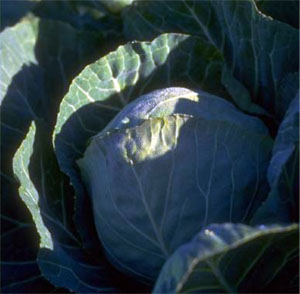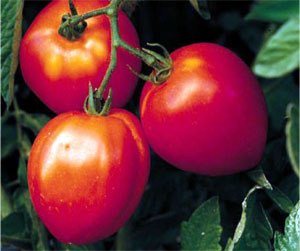Double cropping in a plasticulture system
Vegetable growers using a plasticulture system always want to know if they can use the system for a second crop. The answer is yes, maybe.
Inputs for a plasticulture system can be $500 to $1,000 an acre, higher then bare ground inputs. This figure does not include the irrigation pump and mainlines. Many plasticulture growers look at this additional cost and wonder about the possibility of maximizing the system by planting a second crop. This can be successful depending on how the system is set up and what marketing channels are already established.
 The easiest and perhaps best way to use plastic twice is to use it for two crops in the same year. In Michigan, this requires planting a short season crop early, removing it as soon as production is over and quickly replanting an appropriate crop. Possible early crops are transplanted cucumbers, zucchini and yellow squash, or an early planted cole crop such as early cabbage, broccoli, collards, turnip greens or others. The first crop should be harvested by early to mid-July and the second planted shortly thereafter. Ideally, the second crop would be unrelated, so good crop rotation can be practiced. The cucurbit or cole crop combination is probably good with the cole crop planted second since they will do better if weather turns cool in September. Lettuce would be another good second crop.
The easiest and perhaps best way to use plastic twice is to use it for two crops in the same year. In Michigan, this requires planting a short season crop early, removing it as soon as production is over and quickly replanting an appropriate crop. Possible early crops are transplanted cucumbers, zucchini and yellow squash, or an early planted cole crop such as early cabbage, broccoli, collards, turnip greens or others. The first crop should be harvested by early to mid-July and the second planted shortly thereafter. Ideally, the second crop would be unrelated, so good crop rotation can be practiced. The cucurbit or cole crop combination is probably good with the cole crop planted second since they will do better if weather turns cool in September. Lettuce would be another good second crop.
Switching crops will probably involve making additional holes in the plastic since row and plant spacing will likely be different. It also requires growers to have markets for a wider range of crops.
The second method for double cropping involves using the plastic over two years. If this is the approach, growers should consider using a heavier mil plastic. Standard plastic mulch is 0.8 mil thick and if it is to be used a second year, many growers will increase the thickness to 1.25 mil to provide more durability against wind. Something that may limit the use of this approach is how high the deer population is in your area. A heavy deer population can add more holes as they walk across it in the off season. Holes catch the wind, increasing the potential that the plastic will be damaged and unusable.
 Another problem with carrying the system over to the next year is that various small rodents find it very comfortable under the plastic and they enjoy chewing on the drip tape. Either plan on fixing a lot of holes or abandon the drip tape and plant a crop (cucumbers) with a spreading root system extensive enough to grow beyond the plastic. There is usually enough residual fertilizer left in the beds for a short season crop like cucumbers. The best crop combination is a high input, high value crop (tomatoes, peppers, etc.) the first year and a relatively low value crop the second year. Growers will need to control weeds in planting holes and between beds prior to planting in the second year.
Another problem with carrying the system over to the next year is that various small rodents find it very comfortable under the plastic and they enjoy chewing on the drip tape. Either plan on fixing a lot of holes or abandon the drip tape and plant a crop (cucumbers) with a spreading root system extensive enough to grow beyond the plastic. There is usually enough residual fertilizer left in the beds for a short season crop like cucumbers. The best crop combination is a high input, high value crop (tomatoes, peppers, etc.) the first year and a relatively low value crop the second year. Growers will need to control weeds in planting holes and between beds prior to planting in the second year.
Using plastic for more than one crop is something worth considering, but make sure you plan ahead and have your market channels ready.
Related MSU Extension article: “Water management in a plasticulture system: What we learned from the okra incident”



 Print
Print Email
Email




